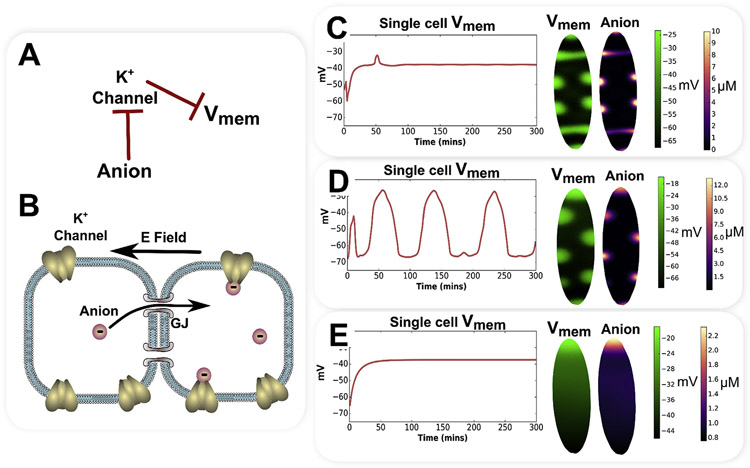Fig. 4.
Bioelectrically-mediated gating-electrodiffusion mechanisms can generate a variety of categorically different patterns. A simple gating-electrodiffusion mechanism involving a gap junction permeable anion that inhibits a K+ leak channel, leading to self-reinforcing spatial feedback, is shown as a regulatory network in (A) and schematically in (B). By varying parameters for channel gating and anion charge, categorically different patterns of and correlated anion concentration patterns are indicated (C through E). With anion charge of and channel Hill gating constants of and , a stable patterns of stripes and spots are generated (C). With anion charge of and channel Hill gating constants of and , with a fixed small gradient of along the long axis of the elliptical model, a spatiotemporal pattern of traveling depolarization spots and correlated anion concentration are indicated (D). With anion charge of and channel Hill gating constants of and , emergent, smooth, stable gradients form (E).

